Beginner RC Helicopters
- How Newbie-Proof Are They?
When I got in to rc flying, way back in the 1980s, beginner rc helicopters simply didn't exist. Buying and flying a radio control helicopter was an expensive and involved hobby indeed, and simple electric helicopters just hadn't been born. Sadly, an rc heli was but a dream!
Fast forward several decades and beginner helis are very widely available, affordable and - importantly - relatively easy to operate.
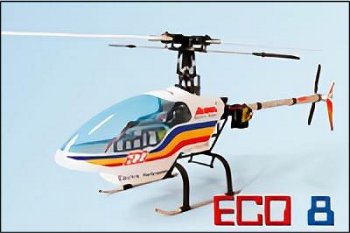 Back in 1993 the German company Ikarus developed the first commercially produced electrc helicopter, the ECO 8.
Back in 1993 the German company Ikarus developed the first commercially produced electrc helicopter, the ECO 8.
Several years later their Piccolo, a mini 4-channel fixed pitch (FP) model, appeared and this one really set the scene for what was to become a very popular sector of the radio control flying hobby.
It was a little Piccolo that I remember watching being flown at an indoor model exhibition once - the dream had come true!
This little heli set a trend and immediately identified a massive marketing opportunity. There were lots of wannabe rc helicopter pilots out there who couldn't justify spending all their cash and spare time on an expensive glow plug powered helicopter, but would be very happy to buy a simpler RTF (Ready To Fly) electric one.
But the ECO 8 and Piccolo still were not what you'd call beginner rc helicopters - they still needed to be mastered way more than today's beginner helis do.
Beginner RC Helicopter Types
Many beginner rc helicopters are of the coaxial variety, like the little Blade mCX2 shown here (read my Blade MCX review).
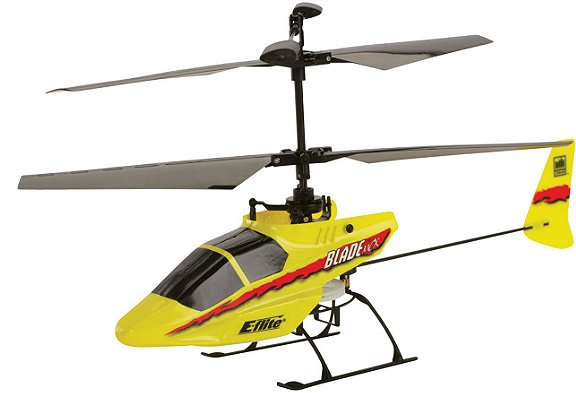
Coaxial, meaning common axis, just means that the helicopter has two sets of main rotors, one mounted above the other.
The rotors turn in opposite directions to one another and cancel out any reactive torque (a natural force created by a spinning object) otherwise produced by a single main rotor. If there is no torque then no tail rotor is needed on the helicopter, and that makes learning to fly the thing easier.
Coaxial rc helicopters, like the mCX2, are inherently very stable machines and the learning curve is shallow - in fact it's pretty flat!
Single rotor rc helicopters are, traditionally, a lot harder to master. Of course, the attraction of single rotor helis over coaxial ones is that of visual appeal - single rotor helicopters look like proper helicopters, whereas coaxials don't. A tad superficial? Perhaps, but you have to be happy with what you're flying!
But with that said, there are a few full size coaxial helicopters in the world, they're not completely fictitious things!
The other big difference between the two types is that of flight performance and agility in the air. Although a coaxial helicopter is easy to fly, you can't do much with them compared to a single rotor helicopter, in terms of more advanced flying and aerobatics.
Single Rotor Stability
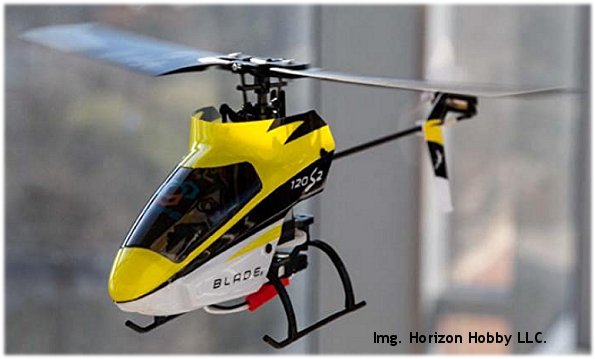
Above: the Blade 120 S2 makes flying a single rotor rc heli easier.
Helicopters are inherently unstable machines. As a real heli pilot once told me, you don't fly a helicopter - you just stop it from crashing!
But with all the electronic advancements that have been made within the radio control flying hobby in recent times, in-flight stability gizmos have become commonplace.
RC helicopters like the superb little Blade 120 S2![]() Product sold on Amazon. As an Amazon Associate I may receive a small commission if you buy, at no extra cost to you. Thanks for your support, it helps keep RC Airplane World alive!
, shown above, have really changed what can be classed as a beginner rc helicopter.
Product sold on Amazon. As an Amazon Associate I may receive a small commission if you buy, at no extra cost to you. Thanks for your support, it helps keep RC Airplane World alive!
, shown above, have really changed what can be classed as a beginner rc helicopter.
I have an S2 myself, and love it. It's small enough to be flown indoors, and it has three levels of stability - beginner, intermediate and expert. All this is thanks to Horizon Hobby's well known SAFE™ technology found on many of their branded aircraft.
In beginner mode, the helicopter will self-level when you release the sticks, and is ridiculously steady in the air. Intermediate mode gives the 120 a bit more fun factor, whilst expert mode turns all the stability aids off and returns the helicopter to its natural unstable self!
All this electronic help is great news for the beginner rc pilot who want to jump straight in with a conventional single rotor helicopter. But with that said, there is still a learning curve to deal with - the things don't fly themselves!
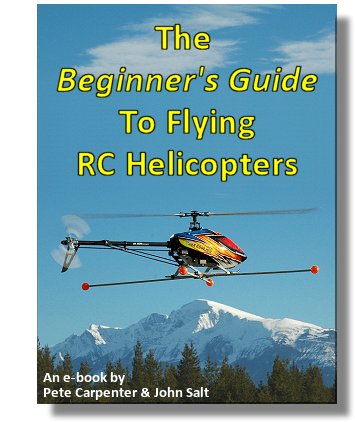 The Beginner's Guide To Flying RC Helicopters is an excellent resource for learning to fly a radio control helicopter.
The Beginner's Guide To Flying RC Helicopters is an excellent resource for learning to fly a radio control helicopter.
Co-written by myself and John Salt of RCHelicopterFun.com, who is a true rc heli guru, the ebook takes you through every step of your new hobby.
And if your budget allows, you might also want to consider buying an rc flight simulator, if you are serious about flying more advanced rc helicopters.
Mastering a fully functional single rotor rc helicopter that doesn't have any kind of stability aids isn't easy; they have a steep learning curve and crashes are commonplace for the newcomer. Don't let that put you off though, because such helicopters - particularly collective pitch (CP) ones - are ultimately very rewarding to fly, but starting out with an easier beginner rc helicopter is a sensible and easy option these days.
You may or may not like the look of a coaxial rc helicopter but they are easy to fly and you need no prior rc helicopter experience to more or less have a successful first flight.
A micro-size coaxial like the Blade mCX that you can fly indoors in complete safety can be an excellent introduction to learning the primary helicopter controls, and even more importantly the more demanding skills such as nose-in hovering.
The video below shows my own mCX and just how stable it is in the air...
Beginner RC Helicopter Training Gear
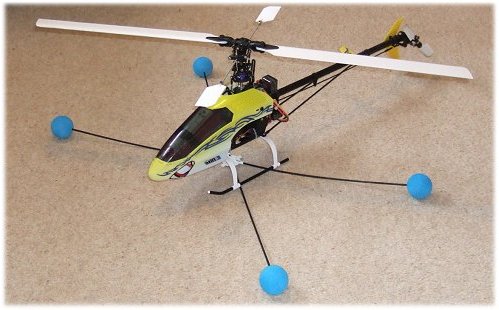
Above: rc heli training gear might not look too sexy,
but it'll save you money!
Training gear might look ugly but it's an essential part of your early rc helicopter flying days, if you're learning on a bigger bird.
Not only does it do its primary job of preventing the helicopter from tipping over and the main rotor blades striking the ground, but it also acts to stabilise the helicopter in the air, thanks to the extra mass it provides.
For the sake of a few extra dollars (training gear is cheap on eBay or you can even make your own), it's well worth having. Even easy-to-fly coaxial rc helicopters can be tipped over during a bouncy beginner's landing and training gear is very generic in that 'one size fits all'. Whatever type of heli you learn on, other than micro size helis, do yourself a big favour and fit training gear to it!
Buying and flying a beginner rc helicopter has become such an affordable and easy thing to do these days. The hobby has come a very long way since I watched that little Ikarus Piccolo in total awe, and I'm very happy that it has!
If radio controlled helicopters like this XK K123 had been around when I was a kid, I would have been a very happy bunny indeed!
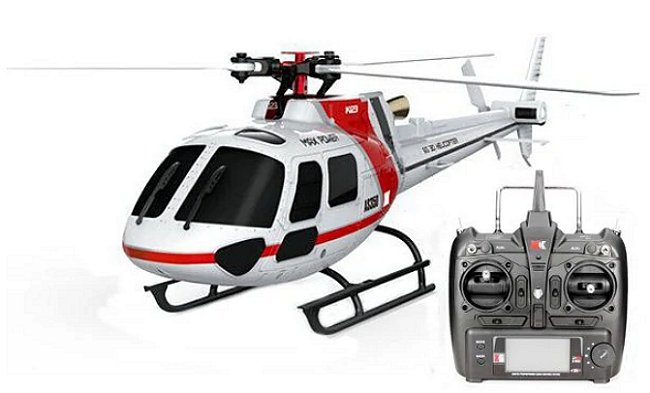
You might also like to read about...
I've recently and reluctantly removed the majority of my heli pages, but here's what still lives on:
